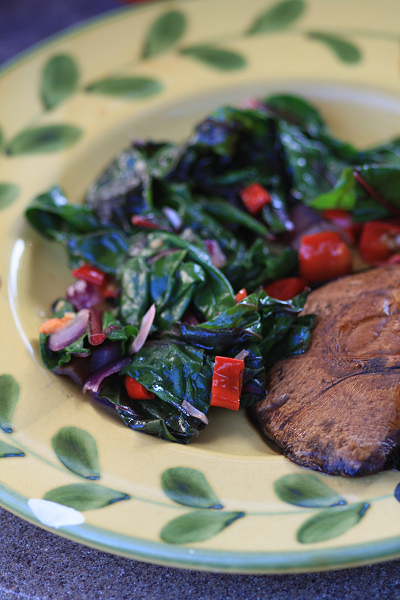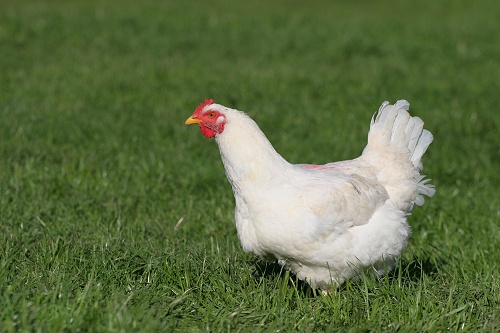I ended up at Foer's New York Times article by way of this editorial which painted Foer's piece as an intensely anti-agricultural essay.
Foer's story probably resonates with many and my guess is that it exemplifies the struggle many vegetarians and vegans go through in their lives. He makes mistakes, consciously chooses a lifestyle that does not mesh with his true ethics and eventually finds himself in a position to create a story of compassion.
This offends the Animal Agricultural Alliance. A lot. So much so that they claim his piece contains some of the most negative stereotypes of modern agriculture. Like ever. Which is odd, because the article itself shies away from describing any actual practices of animal agriculture. De-beaking, gestation /battery/veal crates, castration without pain-relief, maternal deprivation, slaughter etc. ad naseum forever and ever. None of that is mentioned.
The article states a few things about animal agriculture (really, the bulk of the story is an essay on Foer's personal journey to vegetarianism, not about the cruelties inherent to animal agribusiness). In his seven page article, this is what Foer mentions about agriculture:
- 99% of animals consumed in this country are produced by factory farms.
- Animal agriculture is the No. 1 contributor to global warming
- Animal agriculture is No. 2 or No. 3 cause of the most serious environmental problems (air/water pollution, deforestation, loss of biodiversity)
But let's look at the Animal Agricultural Alliance's concerns (first you must get past the initial ad hominem attack and attempt at discrediting Foer all together):
"Just as with Michael Pollan, an agricultural background is notably missing."Having an agricultural background has little bearing on the ethics of raising animals for consumption. Arguably, *I* have an agricultural background, having worked on farms, milked cows, witnessed the slaughter of farmed animals, been taught by producers and received my education from one of the largest agricultural universities in the country. How would that qualify my opinion as inherently more valid than Foer's? There are beliefs people hold that have little to do with their educational background or personal experience. And there are facts, irrefutable in their starkness, that are available to anyone with a computer or access to a library - no agricultural background needed to access the database of the National Agricultural Statistics Service or the studies showing the problems with farming (both to the animals and to the environment). There are certainly gray areas and it is fair to point them out, to question the supposition and seek more evidence. None of that requires 50 years working at a poultry plant or 25 years slaughtering cattle.
"It's easy to slap a label on farms if you have never seen one with your own eyes."Last time I checked, Foster Farms isn't inviting folks into their poultry sheds. Butterball isn't opening up their doors to their turkey barns. Smithfield does not welcome people into their sow sheds. Moark, Inc. isn't holding daily tours of their egg-laying farms. Harris Ranch, with its 60,000 head of "beef" cattle surrounds its facility with barbed wire fencing and attempts to arrest people who try to photograph the feedlot from the adjacent highway. The farms where most animals raised for consumption (meat, milk, eggs) live are not open to the public. The farms that are open to the public, those small family-run operations where animals have better living conditions, are not reflective of how most farmed animals are kept.
Besides, one does not need to see a poultry shed to be discomfitted by the idea of 50,000 chickens living in one shed or 150,000 hens confined in cages in one building. Pictures suffice and those pictures tell a story. The horror of that story is only painfully enhanced when people set foot on the typical egg farm or "broiler" facility. The sounds and scent stay with you.
The Alliance makes a fallacious supposition - that in order to label something as wrong or unethical, we need to experience that something. (In which case, I propose farmers spend a week living the life of the animals in their care).
There are nine states with anti-corporate farming laws, but six of them still rank in the top 10 for hog inventory. Actions taken against corporate farming haven't affected the number or size of farms in those states because family farms make up 98 percent of all farms in the U.S.There are several things erroneous with this statement.
First is the claim that Foer was talking about farms when he stated that "99% percent of the animals eaten in this country" are from factory farms. In fact, he was talking about the animals, not the farms themselves. A family farm is not defined by size - if I owned three broiler sheds with 50,000 birds per shed and I was the sole owner and my parents were the only shareholders, I am running a family farm. Fascinating! So even if 98% of all farms in this country are "family farms", the information is not only useless, it isn't the information Foer was discussing.
Second, the Alliance mentions the anti-corporate statutes found in nine states: Oklahoma, Nebraska, South Dakota, North Dakota, Wisconsin, Minnesota, Kansas, Missouri, and Iowa. It's true, six are in the top ten (with the other three 11, 18 and 28th for hog inventory). Information is missing. Oklahoma, for example, exempts all livestock production from its anti-corporate statues. Minnesota exempts poultry producers. South Dakota's law, one of the stringest of the nine states, was ruled unconstiutional and is no longer enforced (the original anti-corporate law had many loopholes permitting corporate farms). All states have had mixed results with the number of farms increasing or decreasing, depending on class size. And the rules all define farms differently. For example, there is a "family-owned" farm in California that runs two egg-laying operations. One farm has 450,000 hens, the other 700,000. These two farms would be legal in all nine states with anti-corporate laws because it is a "family-run" operation with a small number of shareholders and only family members running the operation. It is fair to state that the definition, legally, of what constitutes a "family farm" is a far cry from the bucolic, small pastured-operations most people imagine.
Or look at Iowa. There are about 8,300 pig farms in Iowa with 20 million pigs.
- 15.4 million pigs live on 2,700 farms confining more than 2,000 pigs per farm.
- 3.7 million pigs live on 2,500 farms with 500-1,999 pigs per farm.
- 1 million pigs live on 3,100 farms that house 1-499 pigs per farm (of which 128,000 live on what most would consider a small farm of less than a 100 pigs).
And in Iowa's case, we have 77% of all pigs being raised on factory farms. If you define a factory farm as any farm with more than 500 pigs, that number jumps to 95.5% of pig flesh coming from factory farms (close to the number Foer suggested).
The 99% number may not be accurate. But it does stem from the reality that 91% of animals killed in this country are chickens. The only profitable method of raising chickens commercially for sale in grocery stores or fast food restaurants is to confine tens of thousands of birds inside sheds and slaughter them at a young age. So it is a safe bet that 91% of animals consumed come from large farms (the chicken industry is vertically integrated with corporations owning hatcheries, the chickens, the feed and also running the processing plants. Farmers who contract with the large chicken companies may own the land, but they do not own the chickens or the chickens feed.) When you add in turkey operations, pig production facilities and the cattle feedlots, that percentage is certainly going to increase. It may be 95% and it may be 99%. It is not less than 91%, if you consider chickens alone.
Foer writes that modern farms are miserable for the environment, farmers, public health, biodiversity, rural communities, global poverty, and so on. There are many facts that help disprove this unfounded statement. For example, of the top ten pork-producing states, three are ranked in the top 10 with the lowest poverty rates. ᅠᅠAnd the Alliance is here to provide a fact for you! If I learned anything from my college statistics professors it was this: Correlation does not automatically mean causation. If I stomp my foot seconds before a hillside at the sanctuary tumbles to the earth, I do not say that my foot stomping caused the hillside to collapse (there are more likely reasons). The same is true of pork production. If I live in a pork producing state that also happens to have a low poverty rate, I don't look at those two statistics and decide raising pigs reduces poverty. Correlation does not mean causation. Being a high pork producing state does not mean your state has a low poverty rate. It's amusing in a strange way that the Alliance is touting this as fact.
Before pinning agriculture with the brunt of environmental criticism, look first to our own human waste disposal system.Seriously? Now, I don't want to make any claims regarding the efficacy of our human waste disposal system, but it is mind-boggling that the Alliance would dare bring this up. We have an actual disposal system - human waste has to be processed and properly disposed of. There are few laws that protect our waterways from the waste produced by livestock. Farmers spray it on crops people eat, store it in lagoons that can overflow during floods and leech into groundwater, and the single primary factor for the large dead zone in the Gulf of Mexico is agricultural run off from the Mississippi river. That is poop, people, and it ain't human. Ultimately, it comes down to this fact: There are ten billion land animals residing on farms in this country - to argue that human waste run-off is more likely to pollute or more deadly than livestock run-off from cropland irrigated with manure or lagoons is ludicrous, at best.
The moral decision to eat meat shouldn't be based on such irrational and emotional arguments but on the science that ensures that farm animals receive the best care possible throughout their lives.This is a sinister argument that undercuts the valid emotional response to suffering.
And science. Oh, science. How it is lauded and praised and our puny, personal feelings are maligned!What has science taught us about farmed animals? They feel pain - check. They can suffer emotional trauma - check. They can learn in similar ways as humans - checks. They have social preferences - check. They experience a flood of hormones similar to ones experienced by humans who are happy - check. They remember past events and modify their behavior for the present and future - check. They form bonds (evidenced as preferential treatment) with members of their own species and members of other species - check. They avoid harmful stimuli, including humans who have hurt them and seek out positive stimuli, including humans who have been kind to them - check. Their young exhibit stunted growth and abnormal behavior when deprived of maternal or appropriate social interaction at sensitive growth periods - check. They have difficulty learning and growing when overly stressed - check.
All these things that science has taught us about farmed animals points to a diverse, enriching life that is mutilated, minimized, oppressed, castrated, torn asunder in every meaningful way on a farm. They are physically traumatized through castration, dehorning, detoeing, debeaking, tail docking, ear notching, branding all without pain relief. They are denied social bonds through crates and cages and stalls. They either do not know their mothers, as on poultry and dairy farms, or their contact with their mother is significantly reduced, like on pig farms. Only lambs and calves raised for beef spend time with their mothers and several behavioral studies show that when separation after weaning occurs, both mother and offspring exhibit stress behaviors; pacing, crying, inappetance, disinterest in normal social interactions.
Let's conclude with a quote from Foer's piece:
To acknowledge that these things matter is not sentimental. It is a confrontation with the facts about animals and ourselves. We know these things matter.









2 comments:
Amazing!
Excellent work taking that "alliance" down, point by point.
I agree with A/P. Truly excellent. The AAA has no common sense, no humanity, no rationality. If a dictionary needed an example of an argument that is absurd, it would be their attack on Foer. What I'd like to know is if they really believe what they write, or if they are giggling as they figure out how to top their previous prevarications. Or is it that they are really running scared?
Post a Comment